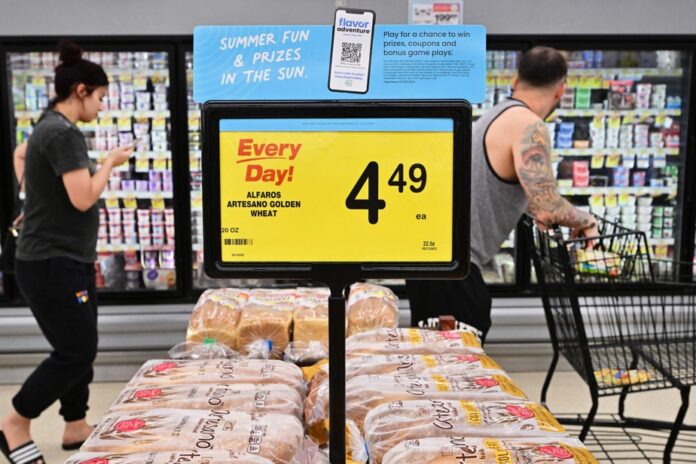(Washington) Inflation slowed sharply in May in the United States, to its lowest level in more than two years, good news for Americans’ purchasing power, but also for the American central bank (Fed), which is starting its meeting on Tuesday and may not raise rates.
Consumer prices rose 4.0% year on year against 4.9% in April, according to the CPI index published Tuesday by the Labor Department, and on which pensions are indexed.
US President Joe Biden, who is now officially seeking a second term in the White House, hailed the “good news for hard-working families” in a statement.
“Although there is still work to do, the program I presented a year ago to reduce the cost of living and maintain stable and steady growth is working,” he said.
Inflation has been halved from June 2022, when it was at its highest in over 40 years, to 9.1% year on year.
It is also the lowest level since March 2021, which was “the last normal month” before prices began to soar, notes Neil Saunders, analyst for GlobalData.
“The question, however, is whether the downturn is enough to ease the financial burden on consumers. The response is mixed,” he said, noting that “they still feel pressure on their budgets.”
Over one month alone, the rise in consumer prices was 0.1% against 0.4% in April. The slowdown is stronger than expected, as analysts expected 0.4%, according to MarketWatch consensus.
Housing prices continue to weigh the most, and used car prices have also risen. Food products too, whose prices had stabilized in the last two months, have shown a small rebound.
On the other hand, energy prices fell by 3.6% over one month, and even by 11.7% over one year. Furniture and plane tickets also cost less than in April.
Excluding volatile food and energy prices, so-called core inflation remains stable over one month, at 0.4%, and slows to 5.3% over one year.
These data are published on the first day of the meeting of the American central bank (Fed). And, although inflation is still too high for its liking, the sharp drop in inflation could convince it not to raise rates, for the first time since March 2022.
“The No. 1 risk to the outlook, that persistent inflation will force the Fed to pour more cold water on the economy, has faded,” said Julia Pollak, chief economist for ZipRecruiter, in a tweet.
The Fed has been trying for more than a year to stop this price spike. To do this, it has a very effective tool, but one that is delayed: the rate hike.
It raised them ten times, to push the commercial banks to raise in turn the interest rates of the loans they grant to households and businesses.
This is intended to slow down economic activity, to ease pressure on prices, by discouraging consumption – in a country where many purchases, however small, are made on credit – and investment.
But it takes months for the full effects of these measures to be felt in the real economy.
Several Fed officials now want to take a break. And avoid too much of a rise, or too hasty a rise, which would precipitate the American economy into recession.
Especially since the spring banking crisis has made banks more cautious about loans, which acts as a rate hike.
The Fed’s decision will be announced on Wednesday after its meeting.
The Fed favors another measure of inflation, the PCE index, published at the end of the month. In April, it started to rise again, to 4.4% over one year, and it wants to bring it back to 2.0%, a level considered healthy for the economy.





